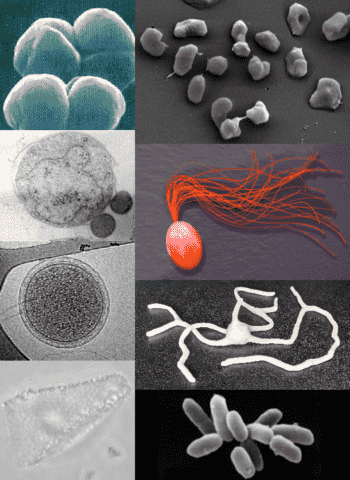Archaea represent one of the three domains of life, alongside Bacteria and Eukarya. Archaea are single-celled microorganisms that are distinct from bacteria and more closely related to eukaryotes in terms of genetic and cellular features. Here’s an exploration of the wonders of Archaea:
1. Extreme Environments:
- Many archaea are extremophiles, thriving in extreme environments that would be inhospitable to most life forms. They can be found in environments such as hot springs, acidic lakes, deep-sea hydrothermal vents, and hypersaline environments.

2. Methanogenesis:
- Some archaea are known for their ability to produce methane. Methanogens, a type of archaea, are found in anaerobic environments such as the digestive systems of ruminant animals and certain wetlands. They play a role in the carbon cycle.
3. Biotechnological Applications:
- Archaea have unique enzymes and biochemical pathways that make them valuable in various biotechnological applications. For example, extremophilic archaea’s enzymes are used in industrial processes that require high temperatures or extreme pH conditions.
4. Genetic and Evolutionary Significance:
- Archaea share certain genetic features with eukaryotes, leading scientists to hypothesize that they might provide insights into the early evolution of life. Studying archaeal genetics helps in understanding the common ancestry of all life forms.
5. Symbiotic Relationships:
- Archaea are found in symbiotic relationships with other organisms. For instance, certain archaea live in the digestive systems of animals, contributing to the digestion process.
6. Deep-Sea Hydrothermal Vents:
- Archaea are integral to ecosystems around deep-sea hydrothermal vents. These extremophiles contribute to the cycling of minerals and energy in these unique environments.
7. Unique Cell Membranes:
- The cell membranes of archaea are distinct from those of bacteria and eukaryotes. Archaeal membranes are made up of unique lipids, including ether linkages, which contribute to their ability to withstand extreme conditions.
8. Halophiles:
- Halophiles are archaea that thrive in extremely salty environments. Some can survive in salt concentrations that would be lethal to most organisms. This adaptation is of interest in the study of extremophiles.
9. Potential for Antibiotic Discovery:
- Archaea from extreme environments may produce novel bioactive compounds, including potential antibiotics. Exploring the unique metabolites of archaea could contribute to drug discovery.
10. Environmental Impact:
- Archaea play roles in nutrient cycling and the breakdown of organic matter in various ecosystems. Their activities contribute to the overall health and balance of ecosystems.
Conclusion:
Archaea, initially thought to be a niche group of microorganisms limited to extreme environments, have proven to be diverse and ecologically significant. Their unique features, adaptation to extreme conditions, and potential biotechnological applications make them a fascinating area of study. Understanding archaea enhances our knowledge of the breadth of microbial life on Earth and provides insights into the fundamental processes that sustain life.











